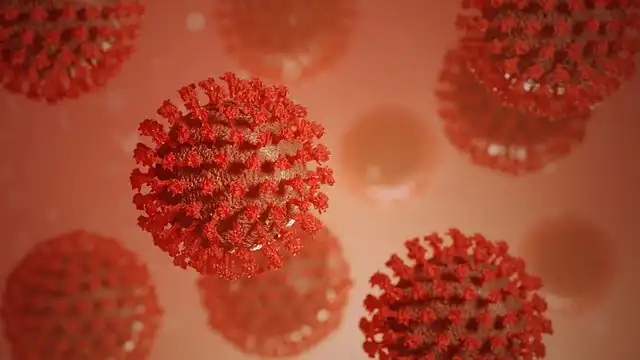Scientists Discover How Ultraviolet Light Degrades Coronaviruses
- Normal Liver Cells Found to Promote Cancer Metastasis to the Liver
- Nearly 80% Complete Remission: Breakthrough in ADC Anti-Tumor Treatment
- Vaccination Against Common Diseases May Prevent Dementia!
- New Alzheimer’s Disease (AD) Diagnosis and Staging Criteria
- Breakthrough in Alzheimer’s Disease: New Nasal Spray Halts Cognitive Decline by Targeting Toxic Protein
- Can the Tap Water at the Paris Olympics be Drunk Directly?
Scientists Discover How Ultraviolet Light Degrades Coronaviruses
- Should China be held legally responsible for the US’s $18 trillion COVID losses?
- CT Radiation Exposure Linked to Blood Cancer in Children and Adolescents
- FDA has mandated a top-level black box warning for all marketed CAR-T therapies
- Can people with high blood pressure eat peanuts?
- What is the difference between dopamine and dobutamine?
- How long can the patient live after heart stent surgery?
Scientists Discover How Ultraviolet Light Degrades Coronaviruses
A new study reveals how light can be utilized to destroy infectious coronavirus particles on contaminated surfaces.
Scientists are particularly interested in thoroughly disinfecting environments such as surgical settings to protect them from viruses like SARS-CoV-2, which has led to the COVID-19 pandemic.
Researchers at the University of Southampton investigated how ultraviolet (UV) laser light can dismantle the virus by affecting its key components. Using specialized UV lasers with two different wavelengths, scientists were able to determine how each viral component degrades under intense light. They found that the genetic material is highly sensitive to degradation, and the protein spikes lose their ability to bind to human cells.
Ultraviolet light encompasses UVA, UVB, and UVC. UVC light, with frequencies below 280 nanometers, is rarely present on Earth’s surface due to absorption by the atmosphere. The Southampton research team specifically used this less-studied UVC light for its disinfecting properties. Different virus components, including genetic material (~260nm) and protein spikes (~230nm), strongly absorb UVC light, allowing the team to choose laser frequencies of 266nm and 227nm for the project.
The study, led by Professor Sumeet Mahajan, involved close collaboration between scientists at the University of Southampton and laser manufacturer M Squared. The research findings were published in the journal ACS Photonics by the American Chemical Society.
The research team discovered that 266nm light, at low power, causes RNA damage, impacting the virus’s genetic information. This light also disrupts the structure of SARS-CoV-2 spike proteins, reducing their ability to bind to human cells by breaking disulfide bonds and aromatic amino acids.
On the other hand, 227nm light is less effective in inducing RNA damage but proves more efficient in protein degradation through oxidation, a chemical reaction involving oxygen, thereby revealing the protein’s structure.
Crucially, SARS-CoV-2 has one of the largest RNA virus genomes, making it particularly sensitive to genomic damage.
Professor Mahajan stated, “The use of light to deactivate viruses in the air provides a versatile disinfection tool for our public spaces and sensitive equipment, which may be challenging to disinfect using traditional methods.” Understanding the varying sensitivity of viral molecular components to light deactivation now opens possibilities for fine-tuning disinfection techniques.
As light-based inactivation gains widespread attention, traditional liquid inactivation methods are deemed unsuitable. With a better understanding of the deactivation mechanism, this study marks an important step in advancing and promoting this technology.
The mechanism for inactivating SARS-CoV-2 using UVC laser radiation is detailed in the ACS Photonics publication and is available online.

Scientists Discover How Ultraviolet Light Degrades Coronaviruses
(source:internet, reference only)
Disclaimer of medicaltrend.org
Important Note: The information provided is for informational purposes only and should not be considered as medical advice.



